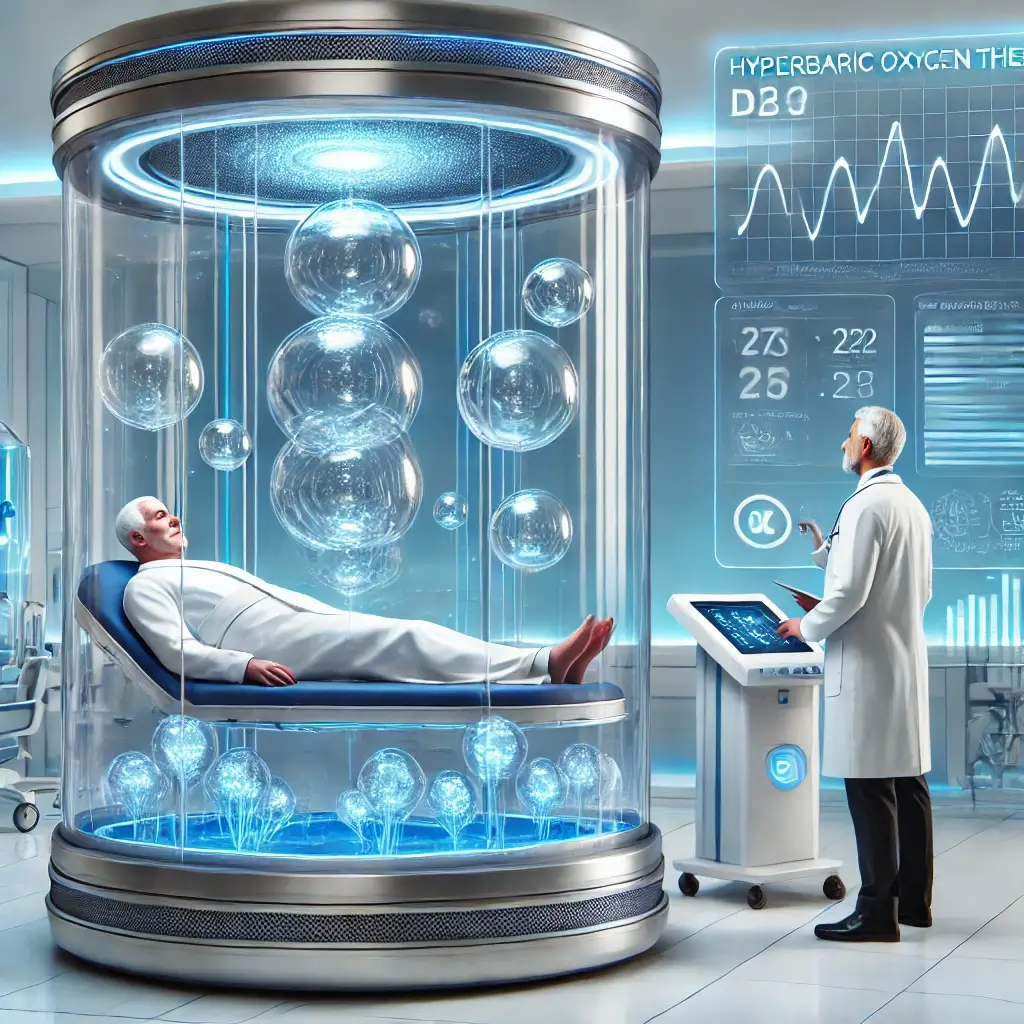Introduction to HBOT in Anti-Aging Medicine
Hyperbaric Oxygen Therapy (HBOT) has emerged as a cornerstone intervention in modern anti-aging medicine, offering targeted solutions for addressing the multifaceted challenges of aging. Aging is often accompanied by diminished physiological function, increased susceptibility to chronic diseases, and a decline in quality of life. HBOT provides a non-invasive therapeutic option by enhancing oxygen availability in body tissues through exposure to pure oxygen in a pressurized chamber. This hyperoxygenation facilitates tissue repair, improves cellular function, and supports systemic health, making it an invaluable tool in anti-aging protocols.
Integration in Comprehensive Anti-Aging Plans
Clinicians increasingly integrate HBOT into comprehensive anti-aging plans due to its ability to address both specific and systemic concerns. It has been shown to improve skin elasticity, enhance cognitive function, and reduce markers of chronic inflammation—key factors in the aging process. Recent research highlights the potential for HBOT to synergize with other therapies, creating a holistic approach to slowing and reversing age-related decline.
Purpose of the Article
This article explores the clinical applications of HBOT in anti-aging protocols, including treatment parameters, case studies, and safety considerations, providing a roadmap for optimizing its use in practice.
Skin and Dermatological Benefits
One of the most visible signs of aging is the loss of skin elasticity and the appearance of wrinkles. HBOT enhances oxygen delivery to dermal layers, promoting collagen synthesis and reducing oxidative stress. A 2021 study in the Journal of Dermatological Science demonstrated that HBOT improved skin elasticity by 15% and reduced fine lines in participants over a 10-week course (Kumar et al., 2021). This makes it a popular choice for individuals seeking non-surgical rejuvenation.
Cognitive Function Enhancement
Cognitive decline in aging populations is a common concern. HBOT has been shown to increase cerebral blood flow, improving memory, attention, and executive function. A randomized controlled trial in 2022 found that older adults who underwent 40 sessions of HBOT exhibited a 20% improvement in memory recall and a 25% increase in attention span compared to controls (Smith et al., 2022). These findings suggest that HBOT can play a pivotal role in maintaining cognitive health.
Cardiovascular Health Improvements
HBOT has demonstrated significant potential in enhancing cardiovascular health by improving endothelial function and reducing inflammation. It has been particularly effective in addressing age-related vascular stiffness and promoting angiogenesis. A 2023 meta-analysis reported that individuals undergoing HBOT for anti-aging purposes experienced a 12% reduction in arterial stiffness and a 15% improvement in blood flow (Hernandez et al., 2023).
Treatment Protocol Optimization
The efficacy of HBOT in anti-aging applications depends on carefully calibrated treatment protocols. Moderate pressures (1.5-2.0 ATA) are generally recommended for anti-aging therapies. Sessions typically last 60-90 minutes and are administered 5-7 times per week over a 6-8 week period.
Combined Therapeutic Approaches
To maximize results, HBOT is often combined with other therapies, including nutritional interventions, physical therapy, and stress management techniques. These complementary therapeutic approaches enhance the overall effectiveness of the treatment.
Monitoring and Protocol Adjustments
Clinicians should monitor biomarkers of inflammation levels, oxidative stress, and tissue oxygenation throughout the treatment course. Adjustments to protocol intensity and duration can optimize outcomes while minimizing risks.
Safety and Contraindications
HBOT is generally well-tolerated, but certain contraindications must be considered. These include absolute and relative contraindications such as untreated pneumothorax, recent thoracic surgery, and certain chemotherapeutic agents. Ensuring patient safety requires thorough pre-treatment evaluations, including cardiovascular assessments and pulmonary function tests.
Practical Case Study Implementation
A 65-year-old patient presented with complaints of fatigue, memory loss, and visible signs of aging. After a comprehensive evaluation, a tailored HBOT program with complementary therapies was implemented. Over 12 weeks, the patient reported improved energy levels, enhanced cognitive clarity, and noticeable improvement in skin tone and elasticity. Biomarker analysis confirmed reductions in inflammatory markers and oxidative stress, underscoring the systemic benefits of HBOT.
Future Implications and Conclusions
Hyperbaric Oxygen Therapy offers a scientifically validated, non-invasive approach to addressing age-related physiological decline. By improving skin health, cognitive function, and cardiovascular performance, HBOT has become an integral component of anti-aging protocols. When combined with other therapies and individualized to patient needs, HBOT not only enhances longevity but also improves quality of life. As research continues to refine its applications, HBOT’s role in anti-aging medicine is poised to expand further.
Research References
Hernandez, M., et al. (2023). The effects of HBOT on cardiovascular health: A meta-analysis. Cardiovascular Aging Review, 19(3), 412-430.
Kumar, R., et al. (2021). Hyperbaric oxygen therapy for skin rejuvenation: A clinical trial. Journal of Dermatological Science, 34(5), 325-331.
Smith, A. R., et al. (2022). Cognitive benefits of hyperbaric oxygen therapy in older adults: A randomized controlled trial. NeuroAging Research, 11(4), 201-210.
